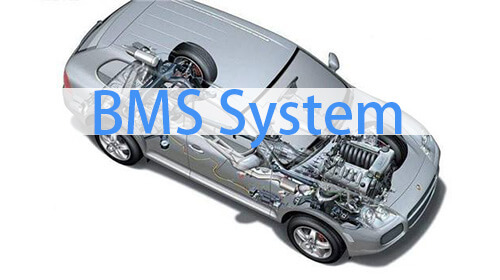BMS System Controlled Object Core Knowledge – Overcharge
Concept overcharging, or overcharging, is a type of lithium-ion battery abuse where the charging voltage of a lithium-ion battery is too high above its charging cut-off voltage. Lithium-ion battery charging usually set charging cut-off voltage, the process needs to use constant current and constant voltage charging method to avoid overcharging the battery. However, in special circumstances, such as BMS damage, malfunction, etc. will lead to overcharging of the lithium-ion battery, resulting in battery performance damage and safety issues. Continuous overcharging at a high rate will lead to an increase in battery temperature and internal pressure, which will have a devastating effect on the performance and appearance of the battery in serious cases, such as leakage, bottom bulging, increased internal resistance of the battery, and shortened discharge time and cycle life.
The principle is well known, the difference between the positive potential and negative potential of the battery voltage. When charging, the positive potential increases, the negative potential decreases.
The reaction formula is as follows:
positive electrode reaction:
![]()
negative electrode reaction:
![]()
x corresponds to the amount of lithium removed/embedded in the positive electrode/cathode material. The relationship between positive and negative lithium content and voltage and the relationship between battery voltage and positive and negative voltage are shown in Figure 1. 4.2V is the most common full-charge voltage of lithium-ion battery, and the inconsistency will be lower when it is used in a group.

Fig. 1 Relationship between lithium content and voltage of positive and negative electrodes, the relationship between battery voltage and positive and negative electrode voltage
When overcharged, the positive and negative electrolyte inside the battery may participate in side reactions. The side reaction is usually accompanied by a loss of battery capacity and a change in internal resistance, which can lead to high temperatures, flatulence, and ultimately, an explosion. Specifically, the side reactions that occur in different materials are different.
- graphite cathode over-charge reaction battery in the over-charge, lithium ions are easily reduced deposited on the negative surface: the deposited lithium coated in the negative surface, blocking the embedding of lithium. Lead to the discharge efficiency and capacity loss, the reasons are:
- the amount of circulating lithium reduced;
- deposited lithium metal and solvent or support electrolyte reaction to form Li2CO3, LiF, or other products;
- lithium metal is usually formed between the negative and the membrane, may block the membrane pore to increase the internal resistance of the battery;
- due to the nature of lithium is very active, easy to react with the electrolyte, and consume electrolyte. This leads to a reduction in discharge efficiency and loss of capacity. Fast charging, excessive current density, severe polarization of the negative electrode, lithium deposition will be more obvious. This is prone to occur when there is an excess of positive activates relatively to negative activates. However, at high charging rates, lithium metal deposition may occur even if the ratio of positive and negative reactive species is normal.
- Anodal overcharge reaction
Anodal overcharging is prone to occur when the ratio of positive to negative active species is too low relative to the negative active species.
The capacity loss due to anode overcharging is mainly due to the generation of electrochemically inert substances (e.g., Co3O4, Mn2O3, etc.), which disrupts the capacity balance between the electrodes, and the capacity loss is irreversible. Even the excessive amount of lithium removal can cause structural collapse. For conventional lithium cobaltate, ternary, the maximum amount of lithium removal is about 50%; for the more stable structure of olivine type lithium iron phosphate, the maximum amount of lithium removal is about 80%.
① LiyCoO2
LiyCoO2→(1-y)/3[Co3O4 + O2(g)]+yLiCoO2 y<0.4
At the same time, the oxygen produced by the decomposition of cathode materials in a sealed lithium-ion battery due to the absence of recombination reactions (e.g., to generate H2O) and the simultaneous accumulation of flammable gases produced by the decomposition of the electrolyte, the consequences will be unimaginable.
② λ-MnO2
lithium manganese reaction occurs in the state of lithium manganese oxide completely de-lithium: λ-MnO2→Mn2O3+O2(g)
- the electrolyte oxidation reaction in the overcharge
When the pressure is higher than 4.5V, the electrolyte will oxidize and generate insoluble substances (such as Li2Co3) and gas. These insoluble substances will clog the pores of the electrode and impede the migration of lithium ions, resulting in the loss of capacity during the cycle. Factors affecting the oxidation rate:
- the surface area of the anode material
- the collector material
- the added conductive agent (carbon black, etc.)
- Types of carbon black and surface area size
Of the more commonly used electrolytes today, EC/DMC is considered to have the highest oxidation resistance. The electrochemical oxidation process of a solution is generally expressed as: solution → oxidation products (gases, solutions, and solid substances) + ne – The oxidation of any solvent will increase the electrolyte concentration and decrease the stability of the electrolyte, ultimately affecting the capacity of the battery. The reaction is more complicated when overcharging occurs in the whole battery. Take the 40Ah NCM111+LMO/Gr battery as an example, the changes in voltage, temperature, and internal resistance during the overcharging process are shown in Figure 2, which can be roughly divided into four stages.
- Stage 1: 1<SOC<1.2, no significant side reactions occur within the cell, with small changes in cell temperature and internal resistance.
- Stage 2: 1.2<SOC<1.4, Mn in the positive electrode is dissolved, the electrolyte is oxidized on the positive side, and lithium metal is precipitated on the negative surface. The reaction between lithium metal and solvent makes the SEI film thicker, the cell impedance increases, and the cell temperature starts to rise slowly.
- Stage 3: 1.4<SOC<1.6, the battery temperature rises faster, the battery bulges significantly, and the oxidation of electrolyte on the positive side accelerates, releasing a large amount of heat and gas. The lithium metal on the cathode surface continues to precipitate, the SEI film begins to decompose, and the lithiated graphite reacts with the electrolyte. Due to the change in the structure of the cathode material, the battery voltage reaches a peak of 5.2V and then drops slightly.
- Stage 4: SOC>1.6, the internal pressure of the battery exceeds the limit, the shell breaks down, the diaphragm shrinks and deforms, and the battery thermal runaway. A short circuit occurs inside the battery, a large amount of energy is released rapidly, and the battery temperature rises sharply to 780℃. The side reactions in each stage of overcharging are shown in Figure 3.

Fig. 5 Voltage, internal resistance, and temperature changes during the overcharging of NCM+LMO/Gr battery.

Figure 6: Schematic diagram of the reaction mechanism in the overcharge stage
References: D.Ren et al. / Journal of Power Sources.





